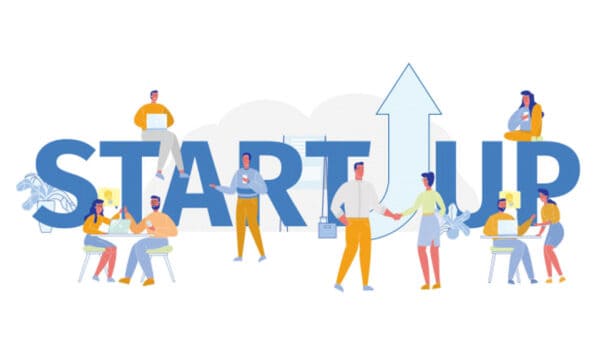What is Market Validation?
The process of finding out whether your product has a demand in your target market is known as market validation. This process of validating your product or service is important since it enables you to ascertain the chances of customers buying your product and know if the endeavor has chances of profitability.
It’s critical to validate your idea early on in the entrepreneurial process to avoid wasting time and money on a mistake. Market validation ensures that the entrepreneur assesses the product/market fit. It also gives the investors confidence that they are investing in a profitable product. The product validation process makes one understand whether their product suits customers’ needs.
A proper market validation process helps you, onboard customers, fast. It enables you to understand the customers’ pain points while introducing your product to the market.
5 Steps in Market Validation:
Write down your Goals and Hypothesis on Paper.
At the beginning of market validation, the entrepreneur will write down their goals. The goal may originate from aspects related to the product value, the target audience, and assumptions the entrepreneur may have about the product. In addition, one has to consider points of differentiation between their products and those of competitors and formulate a hypothesis about various aspects such as price and the business and revenue model that the business will use.
Market Size and Share Assessment
The entrepreneur should then estimate the target market and find out what percentage of the market the business has the potential to command. It is possible to gauge the capacity of the business in the market before launching it. One should evaluate the business potential and market share based on the units of a product in the market.
Researching the sales data and the current market of your segment is critical. You should conduct a similar exercise over your competitors before concluding on possibilities of market share. This exercise is crucial in ascertaining the extent to which your product suits the market and how well you can command the market.
Research Search Volume of Related Terms on the Web
One way to assess your business validity is through research of related search volumes from customers on terms related to your product on the web.
Customers will always visit the internet to look for product information. The more searches per month on such terms, the more valid your idea is.
When the term has a high monthly search volume, the demand is high. One should continuously search for related terms to ascertain the market demand of their brands.
If your product name or description has low monthly search volumes on the web, try adjusting the name or product specification to ensure you introduce a brand name or specification with a high market fit.
Carry out Validation Interviews from Customers
In an attempt to learn about the potential your product has in the market, one can interview customers to validate their idea. Market research is a crucial activity in this scenario.
One can hire a market research organization to complete the tasks on their behalf. Market research can be conducted through online surveys, face-to-face interviews, and the use of filled questionnaires.
During the process, one will seek to understand the current market needs, preferences, and motivations. Customers will provide details about their current product specifications.
At the end of the exercise, one can compare the previous product specifications and hypotheses with the responses from the market research exercise. The feedback can be used to assess the strength of your product validity and make improvements to ensure a high market fit.
However once you assess that there is demand for your product, it is high time to get a patent registered for your product. Registering a patent is quite an expensive affair. As such, you may want to do research on different patent law firms and check out their services.
But remember, the patent is going to be the only legal instrument that is going to prevent your product from being copied. So, don’t try to go cheaper on this.
Product or Service Testing
In this step, alpha and beta testing will be integral in ensuring the most intuitive version of a product is introduced to the market. It is the last step after the entrepreneur is fully convinced that their product or service has space in the current market.
Alpha testing is done by the workers of the firm. They carry out internal testing by debugging and eliminating any issues from the product before it goes to the market. Under beta testing, a group of external users is invited to conduct testing. They do so by identifying any problems in the product according to their market experience.
In a scenario where the product is software, beta testing is done under caution to users that the software is unfinished. The caution helps eliminate any reputational risks that the firm may face due to the release of inferior software applications in the market while still under testing.
You should be cautious when testing your product in the market. A possible risk when testing a faulty or complex product with real users is that they may decide to subscribe to your competitors if they feel that your product is too buggy or not useful.
However beta testing offers useful feedback that an entrepreneur can leverage to meet market needs. Product validation is integral to the success of a startup due to the complexities in customer preferences and needs.
Product Dimension in Market Validation
Once an entrepreneur has validated their products, they should decide the type and features of a product that final consumers should have in the market. Your startup team will be keen to introduce a top-notch solution to the market.
However, you should leverage the available market needs to boost earnings. Since the previous section enables the startup team to understand early adopters, this section becomes easy. Your team needs to evaluate the adoption rate of their product at launch.
And once that’s done you can focus on the two main parts in tuning your product dimension:
- MVP: In this step, you need to focus on the feasibility of implementing the concept and the required prototypes into a full-fledged product or service that is ready to enter into the market and cater to the market.
- Innovation Type: The startup team will need to determine the innovation technology of their product. Information about the technology will help them gauge the adoption rate when the product is introduced in the market. Furthermore, it will help you estimate the market penetration rate of their product given details of the current market.
Feasibility of Implementing the MVP Concept
Motivated entrepreneurs feel their ideas will succeed and change the global business arena, and they may be correct but more often than not, they are not.
As such having a proper team with members talented in different niches is very important.
Entrepreneurs must consider what talents and expertise they or their team possess to make an informed decision about developing upon their concept idea or MVP while also appearing practical and impressive to businesspersons who may fund it.
The response from the audience or investors can provide relevant information to the startup team to assess whether their product is technologically feasible; otherwise, they would need to hire a technology specialist or form a technical expert’s panel to examine and assess the implementation process of the business. The panel may be forced to introduce a product mock-up in its early stages, or what is generally referred to as a “prototype.”
The development or construction of the MVP is best accomplished by a team that has the appropriate technological expertise. The team should also integrate different organizational aspects within the MVP.
The MVP’s major purpose is to establish an initial technological concept-screening gate before the startup team decides whether or not to move forward with their business concept and move it to the next stage.
Business Dimension for Market Validation
The primary purpose of this section is to ensure that the startup business model is viable in terms of both business and profitability and for that having a business model canvas is an important requirement.
Startup teams can utilize the Business model canvas to sketch their business models.
During the business validation phase, the startup team may not need to prepare a thorough business model canvas; however, they must provide a small summary on all the elements of the model to ensure that there is a full articulation of their business concept necessary in the analysis of its validity.
You can develop a 1-2 page description for each of the nine elements of the canvas model.
However, make sure your model has these elements fully planned for –
- Market Size: This element describes the size of your business market.
- Value Proposition: Under this section, you will describe your product and services in detail. MVP will also be an integral part of this briefing. Also mention your intended customer segments, product differentiations, and the product benefits that you intend to provide.
- Channels: This section describes how the product will reach consumers. The different distribution channels that an entrepreneur chooses to use will determine the quality and efficiency of their supply chain.
- Customer Relationships: It discusses how the business will create demand for its product.
- Key Resources: The commodities and other important business assets that will aid its operations.
- Key Partners: Other businesses or entrepreneurs who are interested in the success of your firm.
- Revenue Streams: It contains the sources and sizes of profits for your business.
Wrapping it up
Startups and Entrepreneurs who want to venture into different fields or expand their existing fields must be watchful to ensure they utilize resources on successful products.
If you’re a first-time entrepreneur with a technological startup firm or product concept, statistically speaking, your chances of success are slim. As a result, to increase the likelihood of success, entrepreneurs should create protocols that will assist the business in the business concept validation process before implementing it and analyzing market penetration.
Recognition of the fact that startups only have untested hypotheses at the concept phase is a feature of successful entrepreneurs. As a result, due diligence necessitates extensive planning and knowledge of the various essential business elements that must be addressed during the concept phase.
One of the most significant issues that businesses confront at this stage is monitoring and evaluating all of the environmental factors that could influence business. The process is done through a thorough environmental scanning. Determining their analytical priorities at this stage is sometimes cumbersome.
The purpose of having an MVP isn’t to collect feature requests to change the product or expand the feature set. Instead, the goal is to put people first. The process enables you to assess your understanding of the customer’s needs.
One can iteratively refine the solution only if there are no buyers of the initial MVP. They may fail to understand which areas to concentrate more or less and to investigate, all while attempting to comprehend “what must be clear and foresee the venture-killing dangers.’’ The entire process of launching a new product in the market is not a walk in the park; hence maximum efforts and resources must be devoted to the process.
Richaa is the Chief Experience Officer at WinSavvy, a startup consultancy and is an advisor at PatentPC. Although she has a legal and financial background, she has had worked with startups and small businesses offering a wide range of consultancy services including marketing and product launch since 2017. My Startus Profile and this is the StartUs profile of Adhip, founder of WinSavvy.com


























































































































































































